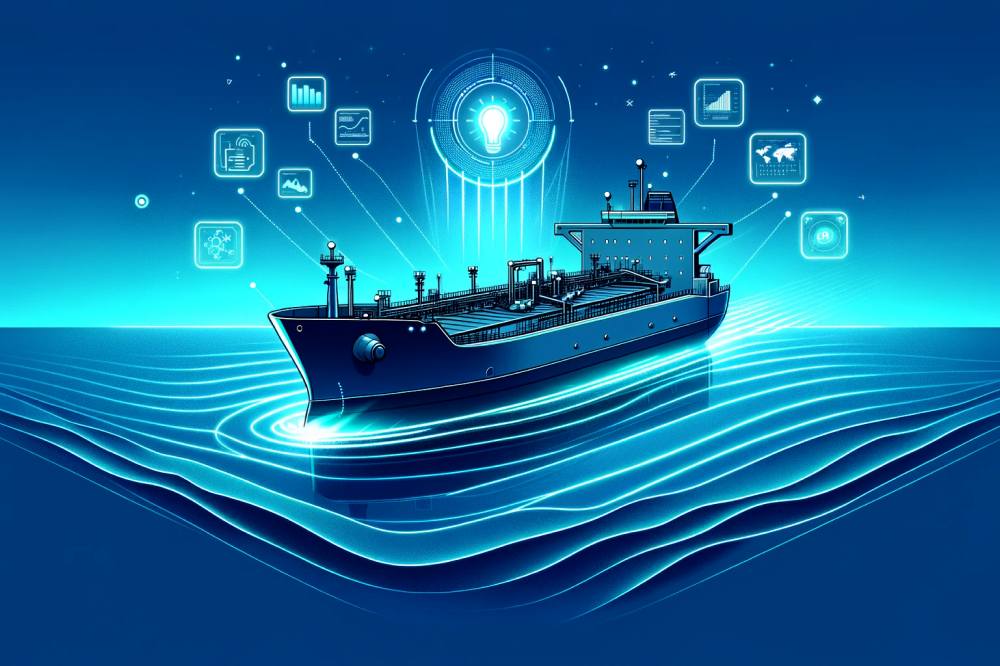
Is the shipping industry ready for a digital disruption?
Shipping has existed since the dawn of time and is critical for the global economy, involving the trade and exchange of goods between countries. Despite offering numerous advantages over other means of transportation, the industry is often referred to as conservative, and they continue to operate using silo-based legacy software, leading to a significant amount of manual work.
In previous interviews, I had the opportunity to ask three experienced shipping executives why they believe the industry continues to use legacy silo-based software. This article will delve deeper into the benefits and challenges of legacy software before posing the fundamental question: Is the shipping industry up for a change?
Shipping’s legacy software
Silo-based legacy software refers to older software systems that operate independently on-premises. Being isolated from other systems, the silo-based software cannot often integrate with other systems without a lot of manual work from IT contractors. The software is also expensive to maintain because of the manual tailor-made adjustments implemented by the contractors. This can result in data fragmentation and a lot of information being lost in communication between the parties. The Cloud software is on the other hand easy to integrate with other cloud solutions and much more affordable to maintain, also making the exchange of data between software much more efficient.
Jon Skule Storheill, the CEO of Awilco LNG, has been a part of the shipping business for more than 35 years. According to him, the biggest challenge with replacing legacy software is the integration done many years ago between the different parts oft he business.
- The technical side, management, operations, commercial side of the vessels, accounting, reporting, and other aspects of the industry, are all using yesterday’s software and so they are unable to speak together. That is one of the reasons why there is a lot of manual labor involved in communicating, which is a waste. A lot of data is lost.
When asked about the benefits of the legacy software Storheill’s answer is quite straightforward.
- I don’t think there are any benefits.
The comfort zone
Today, no shipping companies consider software as their core business activity. Instead, the companies view software as a supportive tool for their decision-making, wanting to make the process easier and more efficient.
Kristin Omholt-Jensen, the CEO & founder of tech start-up MaritimeOptima, is one of the people trying to make this happen. Maritime Optima is developing software for the industry based on AI, big data, and algorithms to help companies unlock their digital potential.
Despite her mission, she acknowledges the challenges involved in creating a replacement forthe silo-based legacy software.
- This is a transaction-based industry meaning the decision makers in the industry make daily decisions involving a lot of money and risk. So useful software for the shipping industry needs to understand this complexity and the risk involved.
Much of the software used in the shipping industry today was developed in the early 2000s, using the technology of that time. This has resulted in on-the-premises software with expensive tailor-made adjustments for each customer, but a lot has changed in the technical infrastructure since then.
Today, the industry has much more affordable and faster connectivity between ships and offices that along with the use of cloud storage results in more affordable storage of data. In addition, the cloud software makes them much more efficient to integrate with other software through APIs, than the on-the-premises software where you have to have contractors doing expensive tailor-made work. This modern digital and affordable infrastructure also provides opportunities for old technologies such as machine learning and AI algorithms. Cloud software will also make organizing teamwork more efficient since you can log in to software from different devices from any place around the globe.
- Today, technology is being used as a tool. There is a wide range of companies offering various types of software and tools, and it is being used. But you might say the big disruption has not happened yet, says Svein B. Nordeng, owner and director of Frontier Shipbroking.
When talking about a big disruption of the digital transformation Nordeng is referring to a profound change in digital approaches used in the industry, from conservative and traditional routines to innovative and digital solutions. A change like this would involve adapting to technologies like AI and data analytics to optimize logistics, operations, and communication.
Since Nordeng himself says that technology is here, I ask him why he thinks digital disruption has not happened in the shipping industry.
- I would say it is because most people currently find the industry comfortable. Business as usual is comfortable and it’s a profitable industry. The shipowners, shipbrokers, etc. all have good earnings, and for them, it is all about keeping the business on course. A disruptive technology would pose a threat.
The digital transformation
While some describe it as a threat, others find a digital disruption vital for the industry.
After the world stopped during the COVID-19 pandemic, the UNCTAD presented a review of maritime transportation in 2021. Among other findings, the review wrote that various sectors of the maritime industry acknowledge the significance of new technologies and digitalization for increasing efficiency and sustaining business consistency at times of disruption (UnitedNations, 2021).
- This industry, together with the rest of the world, has begun a journey on its way to a digital transformation and so the shipping industry needs new software to take part in the digital innovation. No matter the size of the company, or the profit, this digital transformation is going to happen, says Omholt-Jensen.
In her opinion, being part of the digital transformation does not have to involve a complete renovation of how the shipping industry is organized.
- Instead of taking one giant leap, the solution lies in making incremental digital progress by selecting agile software. This way, the software does not control you but rather works as a digital partner, accessing the data you need when you need it. The software should help experts work more efficiently and make more qualified decisions, unlocking their digital potential.
Svein B. Nordeng describes technology like this as essential for surviving in thedigital future of shipping.
- We are talking about so powerful technology that is so powerful that if you're not inside it then you're going to fall outside. (…). Therefore, you have to be updated on products like Maritime Optima is offering to be able to stay at the edge of the digital transformation. If not, you’re going to be on the other edge, which is the edge of a cliff, and out of business.















